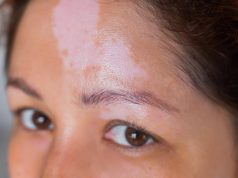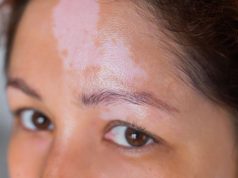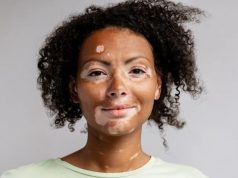Case reports describe repigmentation of vitiligo with facial involvement in Hispanic woman, white man
TUESDAY, Feb. 6, 2018 (HealthDay News) — The combination of the janus kinase (JAK) 1/3 inhibitor tofacitinib and narrowband ultraviolet-B (UV-B) phototherapy may result in repigmentation in vitiligo with facial involvement, according to a research letter published online Jan. 31 in JAMA Dermatology.
Sa Rang Kim, from the Yale School of Medicine in New Haven, Conn., and colleagues describe two patients with vitiligo with significant facial involvement who were treated with tofacitinib plus low-dose, narrowband UV-B.
The authors describe the treatment of a Hispanic woman in her 30s with a 12-year history of vitiligo. Treatment was initiated with tofacitinib 5 mg twice daily and full-body narrowband UV-B twice weekly. There was nearly complete regimentation of her face after three months of treatment, as well as 75 percent or greater repigmentation of her neck, chest, forearms, and shins and only minimal freckling of the dorsal hands. The second case was a white man in his 50s with long-standing vitiligo. He began treatment with tofacitinib 5 mg twice daily and narrowband UV-B two to three times weekly to the face. There was about 50 percent repigmentation of the face after three months of treatment and about 75 percent facial repigmentation after six months. At other body sites, there was no repigmentation.
“The results support the hypothesis that photoactivation is required to stimulate melanocytes to leave their stem cell niche and seed the epidermis, while tofacitinib suppresses the autoimmune response,” the authors write.
One author disclosed financial ties to the pharmaceutical industry.
Copyright © 2018 HealthDay. All rights reserved.








